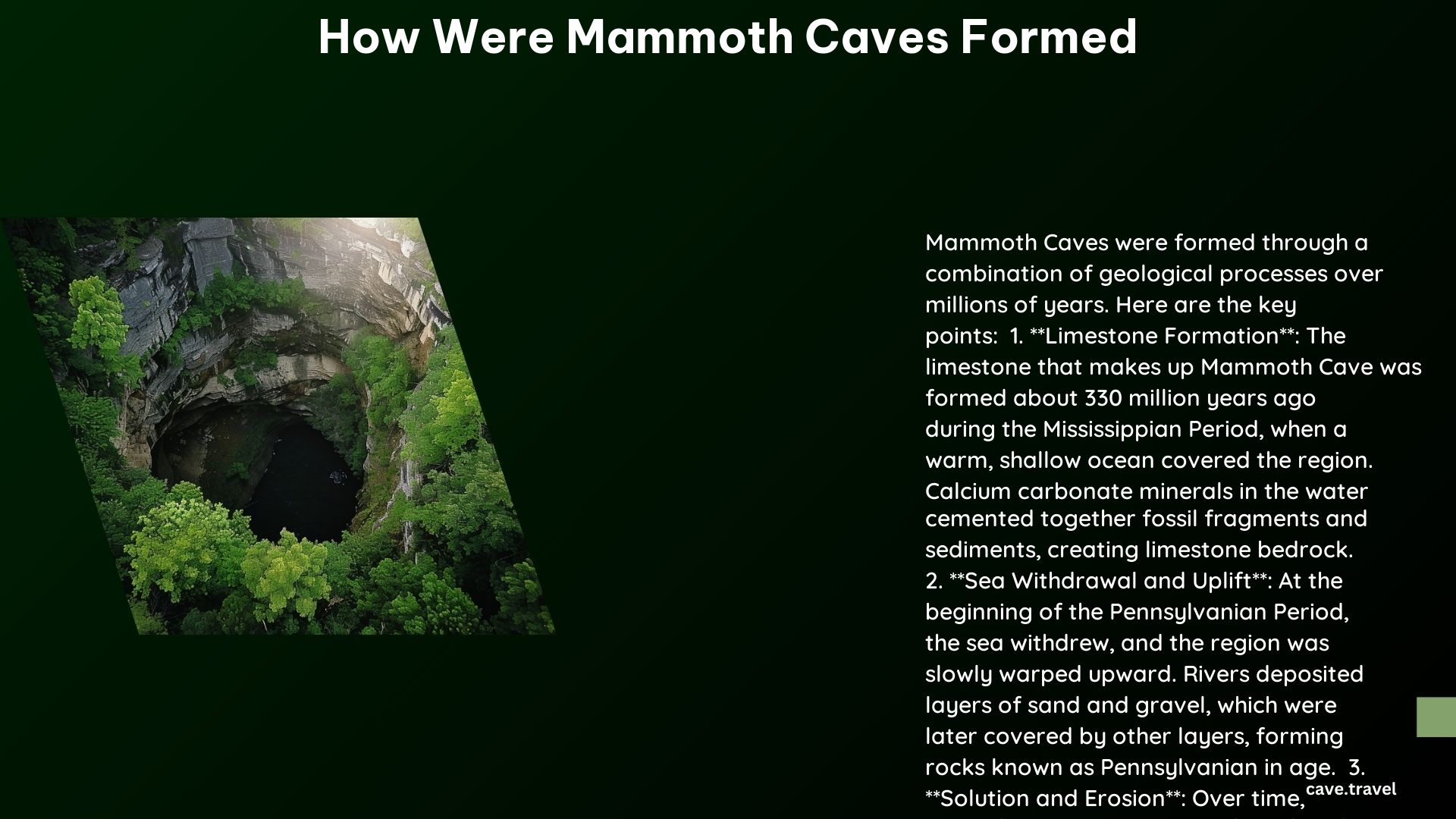Mammoth Cave, located in Mammoth Cave National Park, Kentucky, is the longest known cave system in the world, spanning over 365 miles of surveyed passageways. The formation of Mammoth Cave is a complex process that has unfolded over millions of years, involving geological processes, groundwater, acid, and underground rivers and streams.
Geological Processes Behind the Formation of Mammoth Caves

Mammoth Cave was formed primarily from limestone, which was created about 330 million years ago during the Mississippian Period. This limestone was formed from mineral matter in seawater and the shells and other parts of animals and plants that lived in the shallow sea covering the region at that time. Over time, the limestone was shaped by geological processes such as erosion and sedimentation.
Role of Groundwater and Acid in Shaping Mammoth Caves

The cave was formed through the slow dissolution of limestone by groundwater. Rainwater infiltrating the soil picks up small amounts of carbon dioxide gas, which reacts with the water to form a weak carbonic acid. This mildly acidic groundwater then dissolves the limestone, creating passages and caverns over time.
Underground Rivers and Streams Carving the Mammoth Cave System
As groundwater dissolves the limestone, it forms underground streams that converge and create the extensive network of passages in Mammoth Cave. These streams carve out channels downward through the bedrock, forming canyon passages, tube passages, and vertical shafts. The water table has played a crucial role in shaping the cave, with different levels of the cave forming at different times as the water table dropped.
Key Features and Formations in Mammoth Caves
- Canyon Passages: Formed by underground streams following tilted layers of limestone, eroding channels downward through the bedrock.
- Tube Passages: Wide, oval-shaped tunnels formed while filled with flowing water, often found in lower levels of the cave.
- Vertical Shafts: Tall, narrow passageways formed by water flowing straight down through vertical cracks in the limestone beds.
- Keyhole Passages: A combination of tube passages and canyon passages, formed by changing water levels.
Timeline and Current State of Mammoth Caves
- Formation: The limestone was formed about 330 million years ago, and the cave passages began forming around 10-15 million years ago.
- Discovery: The cave was rediscovered in 1798 after being explored by prehistoric peoples 4,000 years ago.
- National Park: Mammoth Cave was authorized as a national park in 1926 and fully established in 1941, with over 365 miles of surveyed passageways.
Preservation and Protection of Mammoth Caves
The cave system is not self-contained and is affected by regional groundwater basins and air quality. To preserve the natural systems of Mammoth Cave National Park, it is essential to protect the region’s air and watersheds.
References:
– https://npshistory.com/publications/maca/index.htm
– https://www.nps.gov/maca/learn/nature/rocks-of-mammoth-cave.htm
– https://u.osu.edu/mammothcave/geology-of-the-park/
– https://www.nps.gov/maca/learn/nature/how-mammoth-cave-formed.htm
– https://kgs.uky.edu/kgsweb/olops/pub/kgs/xsp7reduce.pdf
